The Annual Arts Fuse Holiday Gift Roundup — Tips From Enthusiasts
Wondering about what to give the arts and culture lover on your gift list? No problem—the sage writers for The Arts Fuse (with an assist from our readers) come to the rescue with thoughtful suggestions.
With gift season comes the existential quandary: What to give the culture lovers on your list? This season the writers for The Arts Fuse help fend off the crisis by recommending items that will delight the heart and stimulate the mind. Please feel free to add your own suggestions in the comments section.
This page will be updated as more selections come in . . . .
Happy Holidays,
Bill Marx, Editor
The Arts Fuse
Mozart 225
The music industry isn’t one to let an anniversary go by unmarked, so, for those keeping track of things, 2016 is the 225th year since Mozart’s death. To commemorate the event, Universal Records released Mozart 225, a 200-disc set of all of Mozart’s complete output. It includes all the published works plus fragments, alternate versions, and the like – pretty much every known scrap of music Mozart wrote. At almost $500, the set’s an investment but, given the breadth of the recordings and the amount of music (nearly 240 hours), something of a bargain, too.
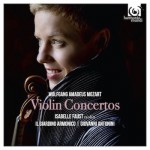
Isabelle Faust plays Mozart (harmonia mundi)
If the complete Mozart is a bit overwhelming, perhaps the complete violin concertos are less so. That’s certainly the case with Faust’s visceral, spirited accounts of the five here. They’re a set I’ve found hard to put down since reviewing it in October and easily one of the best albums of the year.
Paul Lewis’ Brahms (harmonia mundi)
Lewis plays a dazzling Piano Concerto no. 1 – edgy and serene, somehow, all at once – and follows it up with supple accounts of the four Ballades.
Hans Gal’s Piano Concerto (Avie Records)
Sarah Beth Briggs plays the daylights out of Gal’s mid-century Concerto and offers a charming account of Mozart’s Concerto no. 22 for filler. Gal expert Kenneth Woods conducts the Royal Northern Sinfonia.
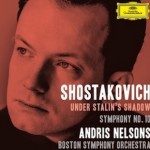
BSO’s Shostakovich, vol. 2 (Deutsche Grammophon)
The second installment of the BSO’s ongoing Shostakovich series picks up where the Grammy-winning first one left off, with playing of striking power and intensity. Arts Fuse review
Mascagni’s Zanetto (Odyssey Opera)
Odyssey Opera’s first commercial recording demonstrates much of what makes this company one of the most vibrant – and important – on the scene today: a finely sung and played exploration of one of the hidden corners (and treasures) of the repertoire.
Fresh Paint (Radius Ensemble)
Cambridge-based Radius Ensemble’s recording of last season’s four premieres is a terrific showcase for the group, whose programs are regularly lively and engaging. Highlights include John Harbison’s marvelous Nine Rasas and Jonathan Bailey Holland’s haunting Synchrony. Arts Fuse review

Virgil Thomson: The State of Music and Other Writings
The Library of America’s second Thomson installment is a doozy: spirited, pugnacious, and filled with brilliant insights and wit. A must-have for anyone interested in American music and/or good, lively writing.
Mason Bates’ Anthology of Fantastic Zoology (CSO Resound)
Another triumphant premiere recording comes out of Chicago, this of the Chicago Symphony Orchestra playing former composer-in-residence Bates’ orchestral showpiece, Anthology of Fantastic Zoology. The orchestral performance is (predictably) brilliant but the piece – full of bright colors, memorable gestures, and a fine sense of drama – really shines.
Abrahamsen’s let me tell you (Winter and Winter)
Hans Abrahamsen’s extraordinary score gets a debut recording here that’s simply ravishing: music of great beauty and power, exceptionally well-sung and -played.
— Jonathan Blumhofer
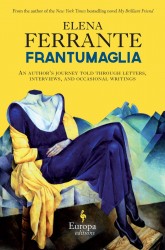
Elena Ferrante’s Neopolitan Quartet and more recently her collection of correspondence and interviews titled Frantumaglia (Arts Fuse review to come) has been riveting readers on every continent. Though Ferrante sees the four volumes of the quartet as one very long novel, they can easily be read in parts. My Brilliant Friend would be a good introductory sample of Ferrante’s writing.
Particularly pertinent reading these days is Frederic Spotts’ Cursed Legacy: The Tragic Life of Klaus Mann. (Arts Fuse review)
And for ebook readers, take a look at the 100+ classics of non-fiction at www.plunkettlakepress, with books for arts and science buffs alike.
— Helen Epstein
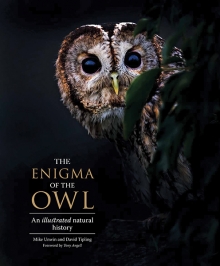
I have always loved owls, and The Enigma of the Owl: An Illustrated Natural History by Mike Unwin and David Tipling (Yale University Press, 288 pages, $40) is a treat because, along with its focus on 53 versions of this fascinating creature — from the aptly named Elf Owl of the American southwest to the gigantic Blakiston’s Fish Owl (it has a nearly six-foot wing span!) — there are David Tipling’s marvelous photographs. Please heed the warning in Unwin’s introduction. In some cultures, owls are reputed to be signs of destruction — but it is far more ominous to see them vanishing:
Deforestation, commercial agriculture, and river pollution have robbed owls of the habitat they need for breeding and hunting, while the use of rodenticides and other toxins have not only depleted the owls’ prey but also caused secondary poisoning to the birds themselves. Today, the International Union for the Conservation of Nature lists six owl species as Critically Endangered, twenty-six as Endangered, and another forty-three as Vulnerable or Near Threatened. As indicator species of a healthy environment, it is therefore the disappearance of owls, rather than their presence, that we should fear as a harbinger of doom.
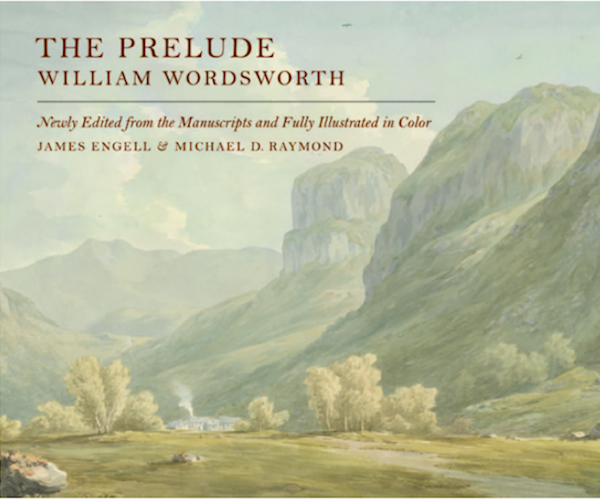
Continuing on the nature theme, there’s The Prelude: Newly Edited from the Manuscripts and Fully Illustrated in Color, written by William Wordsworth, edited by James Engell and Michael D. Raymond (David R. Godine, 304 pages, $40), a beautiful volume that offers a savory way to read through one of the great poems of the English Romantic movement. There’s 130 color images, contemporaneous with the poem, a critical introduction, and a tasteful smattering of notes that assist in clarifying some of the thornier passages. (This is the 1805 version of Wordsworth’s autobiographical poem.)
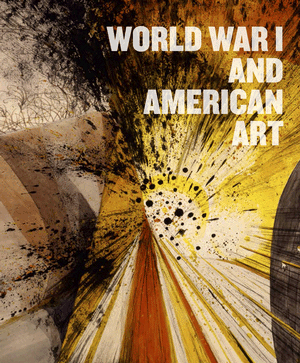
History is bunk, claimed Henry Ford. And the mainstream media has pretty much taken that up as their profitable mantra. There has not been much coverage of the 100th anniversary of one of the traumatic events of the 20th century — World War I. For those interested in what our homegrown artists were making of the ‘war to end all wars’ at the time, turn to World War I and American Art, edited by Robert Cozzolino, Anne Classen Knutson & David M. Lubin. Eighty artists are showcased in this volume — including Ivan Albright, George Bellows, Marsden Hartley, Childe Hassam, Violet Oakley, Georgia O’Keeffe, Man Ray, John Singer Sargent, and Claggett Wilson. The essays and visuals grapple with the conflicts that combat poses for art: propaganda versus dissent, patriotism versus repugnance at violence. The exhibition for this catalog is currently at the Pennsylvania Academy of Fine Arts and will move to the New York Historical Society from May 26, 2017 to September 3.

Staying with the theme of war, and with President-elect Trump’s militarized cabinet choices firmly in mind, an apt gift this season would be War No More: Three Centuries of American Antiwar & Peace Writing (838 pages, $40). The Library of America volume, edited by Lawrence Rosenwald gathers together poems, essays, memoirs, letters, leaflets, songs, and speeches from nearly 150 writers/activists. The chronology covers combat from the Revolution to the war on terror; the selections include the voices of veterans, from the Civil War to the Iraq War, statements of principle from conscientious objectors, and antiwar essays by the usual suspects, Henry David Thoreau, Jane Addams, Thomas Merton, William James, and Kurt Vonnegut. Arts Fuse interview

Finally, it is not often that a work of criticism dazzles both visually and intellectually, but Reading Cy Twombly: Poetry in Paint by Mary Jacobus (Princeton University Press, 320 pages, $45) does just that. Her goal is to make sense of the handwritten words and phrases — naming or quoting poets ranging from Sappho, Homer, and Virgil to Mallarmé, Rilke, and Cavafy — in the often abstract paintings and drawings of this artist. Twombly said that he “never really separated painting and literature.” But how does a critic articulate what he or she finds at the hazardous interpretative intersection of poetry and images? A fascinating exercise in elucidation (remarkably jargon-free) that is illustrated with more than 125 color and black-and-white images.
— Bill Marx
This year, let the tasteful folks at the Criterion Collection stuff the stockings of your discerning cinephile with updated, beautifully packaged editions of films old and new. Criterion released a number of interesting titles this year:
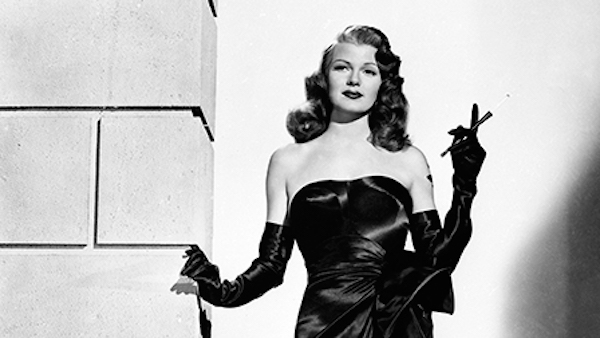
A scene from “Gilda.”
The film features the classic exchange: “Are you decent?” “Who…me?” end stopped with the most epic hair toss in cinema history. Rita Hayworth’s breakthrough performance remains effortlessly alluring, her screen presence adding vivacity to everything around her. Not that the plot of this glamorous noir doesn’t hold its own — it is full of wryly cynical machinations and risky-for-the-period double entendres. America’s fourth atom bomb, detonated in 1946 not long after the movie premiered, was named after her character.
Before the Coen Brothers became household names, they scraped together whatever money they could to make this Hammett-referencing first feature. A humid tale of adultery and revenge set in a seedy Texas town, the film showed that the Coen’s gallows humor and technical mastery was bred in the bone. It also features a striking lead performance by Frances McDormand, who married Joel soon after.
This beautifully packaged ten-part series, directed for TV by the great Krzysztof Kieslowski, examines each of the ten commandments in hour-long episodes that take place in an apartment complex in Poland. Everyday characters struggle with moral and ethical dramas in a somber, muted, but deeply moving style. Editor’s Note: The Dekalog is screening from now through December 15 at the Brattle Theater, Cambridge, MA.
Dr. Strangelove: Or, How I Learned to Stop Worrying and Love the Bomb
Director Stanley Kubrick’s madcap, pitch-perfect, endlessly quotable, and astute diagnosis of Cold War mayhem just gets better (and more relevant) with age. Peter Sellers plays four roles, Sterling Hayden and George C Scott play hilariously enthusiastic militarists, and Silm Pickens plays himself. The film’s influence continues, with comedies still drawing on its mix of deadpan absurdity and apocalyptic paranoia. (Note any resemblances between Brig. Gen. Jack D. Ripper and Retired Lt. Gen. Michael Flynn, Trump’s pick for National Security Advisor?)
— Matt Hanson
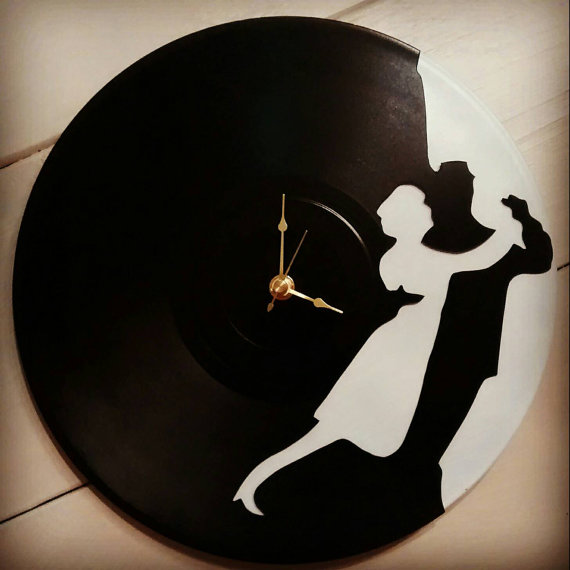
A clock for those who want to keep time while they tango.
Local opera fan Kathleen McDermott creates hand-drawn notecards with capsule biographies of the divas like Lina Cavalieri, who received 840 marriage proposals, and La Maupin, the bisexual duellist
Dancers whose honeys consider them goddesses might be able to pull off this corset (seashell not included)
For the lady who stays on her toes, Degas earrings
A Christmas ornament with punning Irish flair says Get Reel
Hip hop headphones for your down time
And for the kid who never stands still — and might be a dancer in the making —
— Debra Cash
Jim Hall/Red Mitchell, Valse Hot (Artists Share)
I’ve described this set as an unexpected gift, a joy to any guitar player or, for that matter, music lover. Decades ago, this duo made a stunning album for Horizon. As I write, their beautiful transformation of the Mexican folk song “Blue Dove” is going through my head. Valse Hot is a live date by the two, both of whom have passed away. I don’t know where this session has been until now, but it’s a worthy successor to one of my favorite albums.

John Scofield, Country for Old Men (Impulse)
The title says it all. John Scofield, my favorite guitarist who played with Miles Davis, has made a respectful, often gorgeous album made up of country tunes, including songs by Hank Williams (of course) and George Jones. There’s even a Shania Twain entry. Scofield plays the melodies with the utmost care and beauty, but he isn’t afraid to move on and improvise, to the point of changing the song’s nature, as he does with “I’m So Lonesome I Could Cry.” “Mr. Fool” never sounded so good.
Kenny Barron, Book of Intuition (Impulse)
Kenny Barron has been a force in jazz for a half century, since he first appeared in his early twenties with Dizzy Gillespie. Book of Intuition, with its mixture of standards and appealing originals, is his most satisfying album to date. Earlier this year he brought an audience at the Regattabar to its feet with a stomper and then settled the crowd down with a gorgeous ballad — “Nightfall” by bassist Charlie Haden.
Classic 1936-1947 Count Basie and Lester Young Studio Sessions (Mosaic)
Here’s a gift of lasting value for jazz fans who don’t already have these amazing sessions, which include the earliest Lester Young-Basie playing dates, among the most influential in jazz. There are also much later sessions led by Young. An excellent booklet and essays come with this multi-disc set.
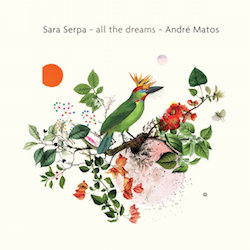
Sara Serpa with André Matos, All the Dreams (Sunnyside)
I am just getting to know this vocal collection of dreamy (sorry) originals by a singer with a beautifully clear voice and exquisite control.
Norah Jones, Daybreaks (Blue Note)
This disc is being hailed as Jones’ return to jazz after a period wandering in the wilderness of country. I love her excursion into Americana, but it’s very easy to recommend this powerful collection. Jones is easy both to admire and to under-rate. The subtlety of what she does with her voice, particularly its fetching vulnerability, continues to compel and impress.
— Michael Ullman
HOLIDAY BOOK ROUNDUP
Books make terrible gifts. The next time you see Uncle Louie you’ll have to come up with something plausible to say about that Illustrated History of the Gatling Gun he gave you for your birthday. Does he think you’re still twelve?
Books as gifts are often about the ego of the giver. That critical study of early Greek architecture you gave your sister last Christmas — wasn’t it really more about consolidating your status as the globe-trotting family aesthete?
Perhaps the worst is the message-gift book; one recent bride will never forgive her new father-in-law for the engagement gift cookbook, How To Boil Water, which he made a point of showing to everyone at the party, adding “Don’t worry, Heather can probably figure out the microwave!”
Still, you have to come up with something. The new Daniel Silva or John Grisham offering is something they might actually read — but why not dig a little deeper? Especially if you have that young relative who might possibly go for something interesting, if they only had something worth going outside of the box for.
So, forget the Barnes & Noble bargain bin. Bypass the 2-for-$10.00 remainder table; those shiny tomes should just come with a permanent bookmark on page 14. For the hypothetical nephew thinking about art school:

Social medium: artists writing, 2000-2015, edited by Jennifer Liese
(Paper Monument) 2016, $28.00
A collection of writings by mostly younger artists creating socially engaged art in the internet era. The volume has loads of cultural critique delivered with verve and, above all, humor. It introduces terms that could come in handy going down the road — eco-aesthetics, meme hustlers, Black Dada, the posthistorical.
But besides serving as a primer of new ideas, up-to-the-moment concepts, and examples of the cream of the intellectual and pop-cultural zeitgeist, the book also names the names in an easy-to-understand, user-friendly way. Take for example Ronald Jones’ (born 1952) essay “Fifteen Minutes,” from a 2007 blog-post about originality and reproduction in art. He uses the Cave Paintings of Lascaux and The Last Supper for test-cases and along the way deftly cites Walter Benjamin, Susan Sontag, and Rosalind Krauss in a way that familiarizes the reader with the essence of their ideas. And his argument is interesting and timely to boot.
There’s fair bit of non-stop navel-gazing, as in Emily Jacir’s (born 1972) “Some things I probably should not say and some things I should have said (fragments from a diary)” from 2008. Many of these excursions are fun, reflections of a major current in the 21st-century essay: self-obsession, in which (to quote editor Liese) the “apparent topic — an exhibition, a book — is often eclipsed and yet illuminated by confessional and cerebral side notes.”
The book is crammed with ripe examples of the latest iteration of New Journalism. Artist Frances Stark (born 1967) contributes a wandering essay, “Always The Same, Always Different,” where in a rumination about the work of artist Ed Ruscha, she zanily digresses about her early days as a “fourth-rate punk-rock groupie;” her dad “cruising brazenly down Sunset Strip in a Corvette;” a ninety-nine cent store; “the thrill of a nicely managed tumble,” etc. etc.
There are also some great illustrations and word-pieces by video and text-based artists such as Ryan Trecartin (born 1981) and the resolutely wonderful Xu Bing (born 1955). Bing’s rule-shattering Book From The Ground: From Point To Point (MIT Press 2013), is excerpted here via a hilarious five page fragment. It is “a novel composed entirely of icons drawn from emoticons, logos and airport symbols of the global village. It narrates twenty-four hours in the life of a young urban professional.”
For the history buff in your life, there’s Ben McIntyre’s Rogue Heroes: The History of the SAS, Britain’s Secret Special Forces Unit That Sabotaged The Nazis and Changed The Nature of War (Crown), 2016, $28.
Not the sort of book I normally read, but I sat spellbound for hours reading its tales of desert warfare in WW2, told in a graphic and cinematic fashion. Paratroopers become tangled up in trees, smashing their limbs and bleeding to death. Men stagger ten days across Saharan sand dunes, enduring triple-digit temperatures, with no water.
Complex characters like Paddy Mayne are highlighted in all their alcoholic, sweating, savage, war-crime-committing ‘glory.’ We are granted an inside view of what war really is: long periods of boredom, privation, and no place to wash-up, punctuated by the terrifying and pulse-quickening ultimatum of kill-or-be-killed.
Gallows humor is rife, as when British guerilla fighters are attempting to cross an enemy checkpoint in order to plant explosives. The German speaker among them is asked for the daily password, which, of course, he doesn’t have. So he does what any soldier would do, letting loose with a torrent of expletives, “Of course I don’t have the f’ing password, I’ve been on f’ing patrol, you f’ing bastard,” after which the guards let them pass through.
Can the world possibly stomach yet another Beatles book? The answer for any real fan is yes, please.

Conversations With McCartney by Paul Du Noyer (Overlook) 2016, $29.95
Devoted fan and longtime British rock music journalist Paul Du Noyer conducted a series of interviews with Sir Paul over several decades. Du Noyer is probably somewhat biased, given he has worked for McCartney writing album liner notes and tour program materials. He is ripe for the ‘fame-affect,’ where it becomes difficult to criticize someone of McCartney’s celebrity stature. But Du Noyer’s professionalism mostly shines through; for instance, here is his summation of McCartney’s late ’70s LP Back To The Egg: “from its frankly awkward title onwards, it remains a head-scratcher.”
It’s the personal insights gleaned from Paul that Beatle-freaks will lap up: “ … a song like the ten-minute “Secret Friend,” yes … it’s dismissible … it’s difficult to admit, but some of those songs I’ve written to avoid writing hits. It’s because I think of myself a bit more as an artist. It’s a strange period I went through. I want to spew this idea on a tape.”
We’re reminded just how many great and near-great post-Beatles song tripped from the pen of McCartney: “Jet,” “Junior’s Farm,” “Maybe I’m Amazed, “Band On The Run.” Are any of them equal to “A Day In The Life” or “Hey Jude?” We could argue this all day.
The flood of post-Beatles books shows no sign of abating.
Come Together: Lennon & McCartney in the Seventies by Richard White
(Overlook) 2016, paperback, $18.95
Continues the Du Noyer scrutiny of McCartney in more of a cut-and-paste fashion, culling interviews from a number of published sources, though the volume also includes interviews with many of the studio musicians who worked with each musician.
Some of the memories take the tired form of glittering generalities, as when session-pro drummer Jim Keltner remembers playing on oh-so-many many Lennon records via lines such as “what a great time we had” and “it was just so much fun.” But there’s also quite a bit of technical lingo about the actual recording process that will please many. And, despite the title, there’s a fair amount of George and Ringo material here as well.
— Timothy Francis Barry

Do you have some loved ones who are tricky to buy gifts for who are possibly also into dark, weird stuff? Well, here’s something quirky for your weirdo pals and relatives. First off, you need stocking stuffers! Why not some Extreme, Gross or Funny candy? You can find fake blood, gummy creatures of all kinds, the ever-popular Harry Potter flavors of jelly beans, and several confections shaped like, um, toilets. Also lollipops with crickets inside, brain-shaped sweets, and of course, salt water taffy that tastes like chicken and waffles.
Those with more refined tastes might like something literary. The new magazine called Sabat is sure to appeal to the pagans, witches, and Goths in your circle. Gorgeous photography, poetry, and a very classy design aesthetic make this softbound black and white journal very collectible; the first issue is already sold out! Thanks to Peter Bebergal for introducing me to this publication; and speaking of Peter Bebergal, this Boston author’s book Season of the Witch: How the Occult Saved Rock and Roll is a great read — a memoir and historical overview of music’s most fascinating era. It’s now available in paperback and would make a great gift for music, pop culture, history, or occult enthusiasts.
And speaking of rock and roll, you can’t really go wrong with a grab bag-styled gift, and the folks at Rockerzine magazine put together a humdinger version called the Rockbox. The holiday edition sells for fifty bucks (way cheaper than concert tickets or a night on Landsdowne Street) and comes with a fab assortment of vinyl, CDs, books, swag like t-shirts or bags, and who knows what else? Also: FREE SHIPPING.
— Peg Aloi
List of recommendations and a slam for 2016
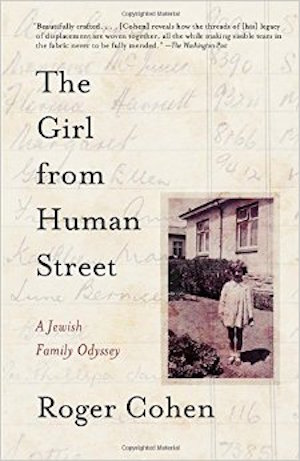
The Girl From Human Street by Roger Cohen, Knopf, $27.95. I somehow missed this book when it was published in 2015, but it is one of the best memoirs I have ever read by a name we all know: he is an outstanding journalist for The New York Times. In a fascinating and circuitous way Cohen gives us the story of his ancestors who made their way from Eastern Europe to South Africa and England until he found the closest approximation of home right here in the United States. The prose is wonderful, his insights are memorable and his story touched my heart.
Exposure by Helen Dunmore, AtlanticMonthly Press, $25. A complex novel set in Cold War England about the reverberations of spying. Dunmore’s writes beautifully and the story she tells — of family, friendship, young sex — will linger for a long time in the mind. What I admired most was the way this spy novel became a story about love and family and the steadfast courage we need just to get through each day. Arts Fuse review
The Uncommon Reader, Alan Bennett, Farrar, Straus & Giroux, $15. Although published in 2007, this charming novella which describes how Elizabeth II discovered books is a great accompaniment to the new Netflix series, The Crown. One of the most moving episodes was when Elizabeth realized how inadequate her education was and remedies it by hiring a tutor. Bennett’s little book rounds out the portrait.
Keeping on Keeping on by Alan Bennett, Faber & Faber, 25 lbs. For those of you who are Alan Bennett fans (he is a great diarist and also wrote The Lady in the Van among many others books and plays), this is a great book to dip into. A member of that terrific quartet Beyond The Fringe, Bennett went on to become an important writer. This last installment of the diaries is more mellow, as one might expect. It is also more open. Bennett is a gay man who was very circumspect about his sexual proclivities for many years, but is now married to his longtime partner Rupert Thomas, and there is a sense of ease and contentment in this book that gives great pleasure to the careful reader.
Here I Am by Jonathan Safran Foer, Farrar, Straus & Giroux, $28. Although I intended to review this book, I did not respect it enough to go through with it. There are some beautifully written parts and he is a serious writer. And I loved his novel Extremely Loud and Incredibly Close. But the protagonist of this narrative is so sophomoric and narcissistic that I lost patience. The conflict’s main event is a divorce, but I found the wife too opaque and the children so precocious that they became ridiculous.
The Gatekeeper: Missy LeHand, FDR, and the Untold Story of the Partnership That Defined a Presidency by Kathryn Smith, Simon and Schuster, $28. For FDR fans this is an interesting addition to the canon. Missy LeHand played a far more important role than any of us may have suspected, and Smith does a nice job of illuminating the close and crucial relationship between Missy and FD, as she called him. It also sheds more light on Eleanor, who becomes increasingly complicated with time.
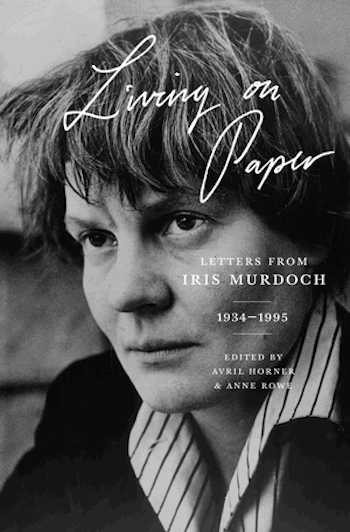
Living on Paper, Letters From Iris Murdoch, 1934-1995, Edited by Avril Horner & Anne Rowe, Princeton University Press, 666 pages, $39.95. Lively, cheerful, intelligent — just what we need now. For any serious reader of 20th century English literature, this book is a treat and will give you some perspective in the coming months ahead. Murdoch was one of the stars of English writing and ended up with terrible Alzheimer’s which was then, some think, exploited by her husband John Bayley in his memoir and the movie, Iris. But this sets the record straight for the lucky reader. Arts Fuse review
Guilty Thing, A Life of Thomas De Quincey by Frances Wilson. Farrar, Straus & Giroux, $30. A superb biography that stretches the very notion of biography and illuminates the English Romantic period in a way I would not have believed possible. It also sent me back to De Quincey’s amazing writing — his Confessions of an English Opium Eater and the Autobiographical Sketches and his essays on Coleridge and Wordsworth and others which are wonderful for any age group because great prose is, simply, great prose. Arts Fuse review
— Roberta Silman
Tagged: Bill-Marx, Debra Cash, Helen Epstein, Jonathan Blumhofer, Matt Hanson, Michael Ullman, Peg Aloi, Roberta Silman

Great ideas! Especially the repackaged “Prelude” from Wordsworth.